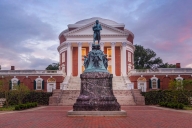You have /5 articles left.
Sign up for a free account or log in.
A survey of more than 6,000 faculty members, across a range of disciplines, has found that when prospective graduate students reach out for guidance, white males are the most likely to get attention. The survey also found that public university faculty members are much more likely than their private counterparts to respond equally to students of varying backgrounds. And the greatest victims of discrimination may be those with names that suggest they are Chinese women.
The study (abstract available here) -- just released by the Social Science Research Network -- aims to identify whether academics create pathways for students of all kinds who want to enter graduate school.
For the study, three researchers sent faculty members letters (as would-be grad students), expressing interest in talking about research opportunities in the program, becoming a graduate student and learning about the professor's work. The letters asked for a 10-minute discussion. The letters were identical in every way except for the names of the fictional people sending them (see text at bottom of article).
The study tested names to make sure that most people would associate certain mixes of gender and ethnicity with them. So for example, Brad Anderson was one of those used for white males. Keisha Thomas was used for black females. Raj Singh was one of the names for an Indian male. Mei Chen a Chinese female. Juanita Martinez a Hispanic female.
Then the professors analyzed the response rates for different types of names, and by different categories of academics -- by disciplinary groupings and the public or private status of the program. (The authors of the study are Katherine L. Milkman of the Wharton School at the University of Pennsylvania, Modupe Akinola of the business school of Columbia University, and Dolly Chugh of the business school of New York University.)
The table that follows shows the percentage of fictional students who received a response from professors, grouped by discipline. Only in the fine arts were white men less likely to receive a response. The table is in the order of magnitude of the gap in disciplinary responses:
| Discipline | % Responding to Women and Minorities | % Responding to White Men |
| Business | 62% | 87% |
| Education | 65% | 86% |
| Human services | 71% | 89% |
| Health services | 57% | 71% |
| Engineering and computer science | 59% | 72% |
| Life sciences | 61% | 72% |
| Natural and physical sciences and mathematics | 64% | 73% |
| Social sciences | 68% | 75% |
| Humanities | 75% | 80% |
| Fine arts | 73% | 62% |
While business has the largest gap in response rate and is a field in which the share of female faculty members has been relatively small, education has nearly as large a gap, and that field has many female faculty members. Over all, the study found no relationship in the percentage of women in a discipline and the different response rates for men and women.
Humanities professors, who had a relatively small 5 percentage point gender gap in their response rates, answered 75 percent of the letters from those who were not portrayed as white men, the largest percentage in the study.
The study then compared the response rates for the different groups of individuals who were not white men, looking at public and private differences. In every category, faculty members at public institutions were more likely than those at private colleges to respond to those who were not white men. In fact, for Hispanic females, public college and university faculty members were more likely to respond than they were to white men.
Over all, the public/private difference was significant. For white women, there was a gap of only 1 percentage point in the response rates from public college faculty members, but the gap was 9 percentage points for private college faculty members.
The biggest gaps were for several groups with names suggesting that the letter-writers were Asian. There was a 29 percentage point gap at private colleges and universities in the response rate to white men and Chinese women. The next largest gap was a 21 percentage point gap in responses to those with an Indian male name, followed by a 19 percentage point gap for those with an Indian female name.
The Letter
Dear Professor [Surname of Professor Inserted Here],
I am writing you because I am a prospective doctoral student with considerable interest in your research. My plan is to apply to doctoral programs this coming fall, and I am eager to learn as much as I can about research opportunities in the meantime.
I will be on campus today/[next Monday], and although I know it is short notice, I was wondering if you might have 10 minutes when you would be willing to meet with me to briefly talk about your work and any possible opportunities for me to get involved in your research. Any time that would be convenient for you would be fine with me, as meeting with you is my first priority during this campus visit.
Thank you in advance for your consideration.
Sincerely, [Student’s Full Name Inserted Here]
In an interview, Milkman said that the researchers did not expect to find such a gap in the treatment of Asian students. "We think it's an incredibly important finding, as it highlights a serious issue that was previously not on anyone's radar," she said. Milkman said more research is "desperately needed to explore why it is that Asians experience so much bias in academia." She said this runs counter to the "model minority" stereotype of consistent Asian success.
As to why public college faculty members may be more open to outreach to those who aren't white men, Milkman noted that professors at public institutions, on average, earn less than those at private colleges and universities. Perhaps, she said, those at public colleges and universities have "different values."
The study argues that the bias present in how faculty members respond to simple inquiries raises all kinds of questions about other forms of bias and whether academe is as welcoming to future graduate students as most academic leaders would say.
Milkman said that the results over all "worry me immensely." She noted that much discussion of bias in higher education focuses on specific policies -- whether admissions criteria are fair, and so forth. But "moments when students seek potential mentors" and express interest in working with someone "matter too," she said.
The paper notes that the project received approval from an institutional review board, and that study subjects were sent information two weeks after they received the letters (and did or didn't respond) with information about the study.




